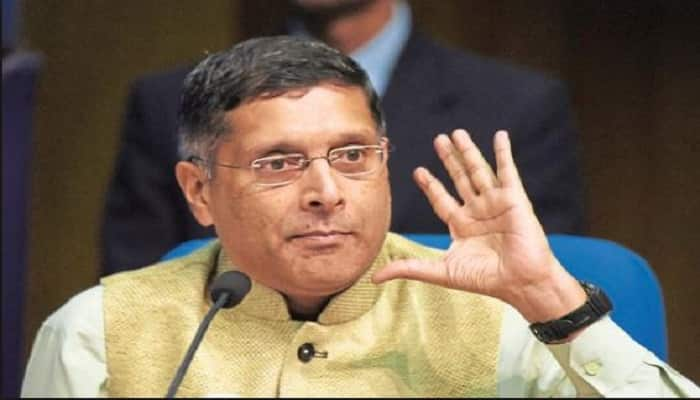Subramanian points out the real GDP was affected; in the six quarters before demonetisation, growth averaged 8% and in the seven quarters after, it averaged about 6.8%
New Delhi: Former Chief Economic Advisor Arvind Subramanian has said that demonetisation was a massive, draconian, monetary shock that accelerated economic slide to 6.8% in the seven quarters after it against the 8% recorded prior to the move.
Subramanian, who quit the post of chief economic advisor earlier this year after a four-year stint, has written a book - "Of Counsel: The Challenges of the Modi-Jaitley Economy", in which he has discussed the November 8, 2016 decision of Prime Minister Narendra Modi.
"Demonetisation was a massive, draconian, monetary shock: In one fell swoop, 86% of the currency in circulation was withdrawn. The real GDP growth was affected by the demonetisation. Growth had been slowing even before, but after demonetisation, the slide accelerated."
"In the six quarters before demonetisation, growth averaged 8% and in the seven quarters after, it averaged about 6.8% (with a four-quarter window, the relevant numbers are 8.1% before and 6.2% after)," Subramanian says in the chapter "The Two Puzzles of Demonetisation - Political and Economic".
Subramanian has continued to keep a studied silence on whether he was consulted in the decision-making process of demonetisation.
He added that he does not think anyone disputes that demonetisation slowed growth. Rather, the debate has been about the size of the effect -- whether it was 2 percentage points, or much less. "After all, many other factors affected growth in this period, especially higher real interest rates, GST implementation and oil prices."
"...But when a shock like demonetisation occurs, that primarily affects the informal sector, relying on formal indicators to measure overall activity will overstate GDP. This hypothesis goes only a small way towards explaining the puzzle since any squeeze in informal sector incomes would depress demand in the formal sector, and this effect should have been sizable.
From the political aspect, the former CEA explained demonetisation was an unprecedented move that no country in recent history had made in normal times. The typical pattern had been either gradual demonetisation in normal times or sudden demonetisation in extreme circumstances of war, hyperinflation, currency crises or political turmoil (Venezuela in 2016).
According to him, the Indian initiative was, to put it mildly, unique.
One answer to the demonetisation puzzle has been that the poor were willing to overlook their own hardships, knowing that the rich and their ill-begotten wealth were experiencing even greater hardship: 'I lost a goat, but they lost their cows', he says. In this view, the costs to the poor were unavoidable collateral damage that had to be incurred for attaining a larger goal.
Subramanian says this is not entirely convincing. After all, the collateral damage was, in fact, avoidable.
"Understanding the political economy of demonetisation may require us, therefore, to confront one overlooked possibility -- that adversely impacting the many, far from being a bug, could perhaps have been a feature of the policy action.
"Not necessarily by design or in real time, but in retrospect, it appears that impacting the many adversely may have been intrinsic to the success of the policy," he says.
Last Updated Nov 29, 2018, 10:29 AM IST











![Salman Khan sets stage on fire for Anant Ambani, Radhika Merchant pre-wedding festivities [WATCH] ATG](https://static-ai.asianetnews.com/images/01hr1hh8y86gvb4kbqgnyhc0w0/whatsapp-image-2024-03-03-at-12-24-37-pm_100x60xt.jpg)
![Pregnant Deepika Padukone dances with Ranveer Singh at Anant Ambani, Radhika Merchant pre-wedding bash [WATCH] ATG](https://static-ai.asianetnews.com/images/01hr1ffyd3nzqzgm6ba0k87vr8/whatsapp-image-2024-03-03-at-11-45-35-am_100x60xt.jpg)



